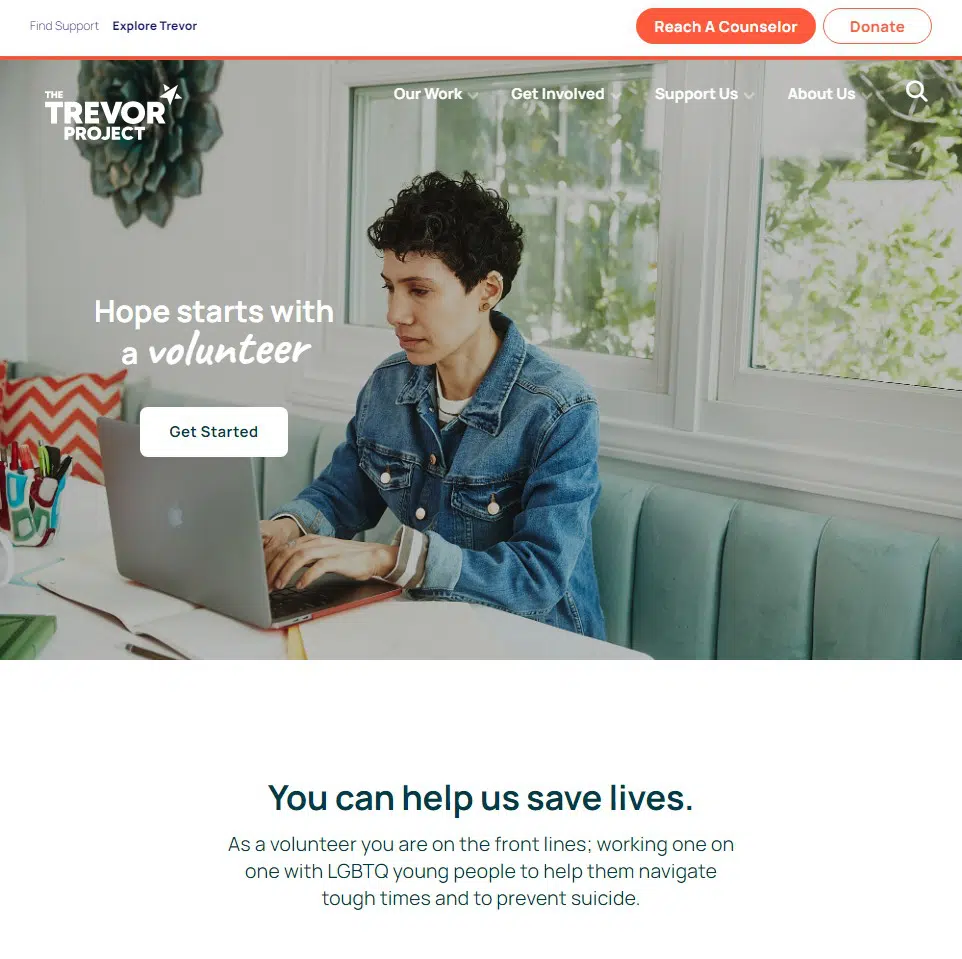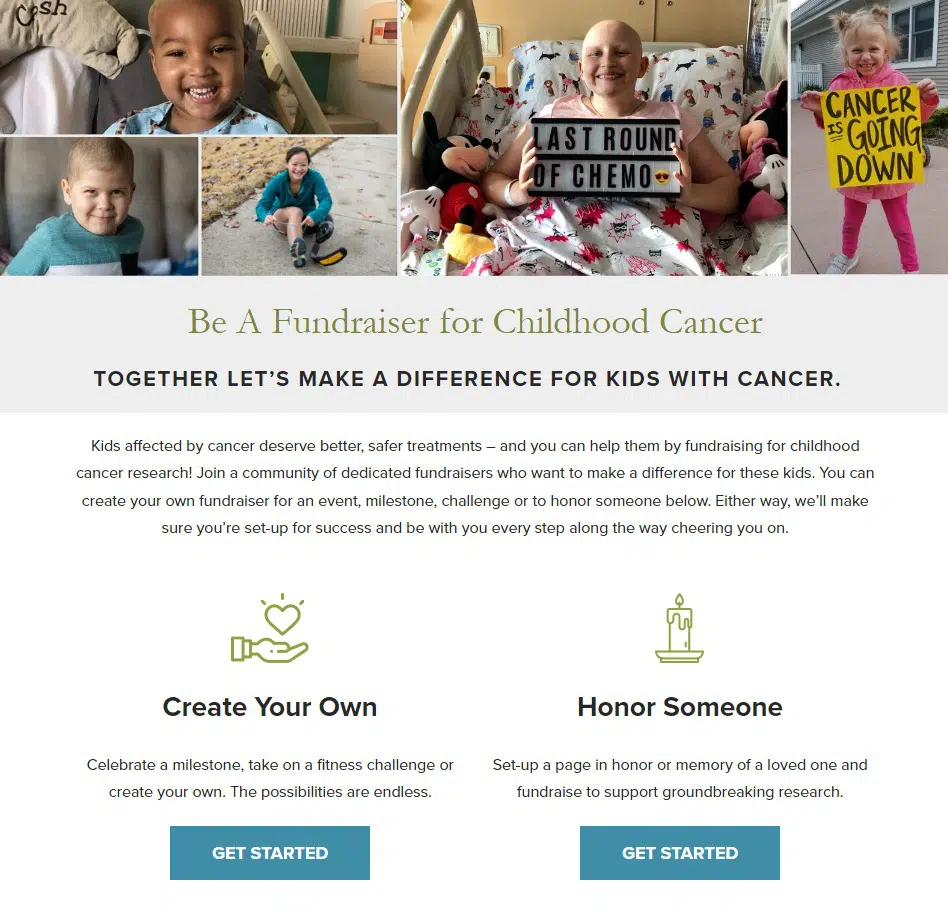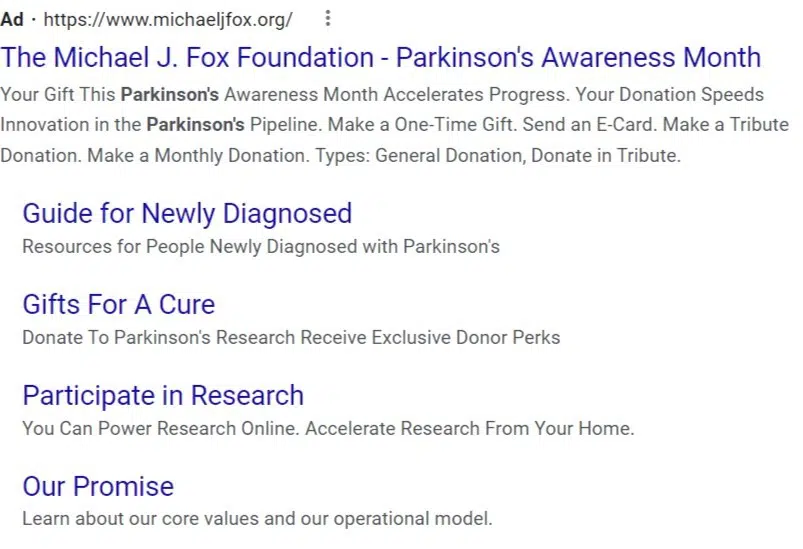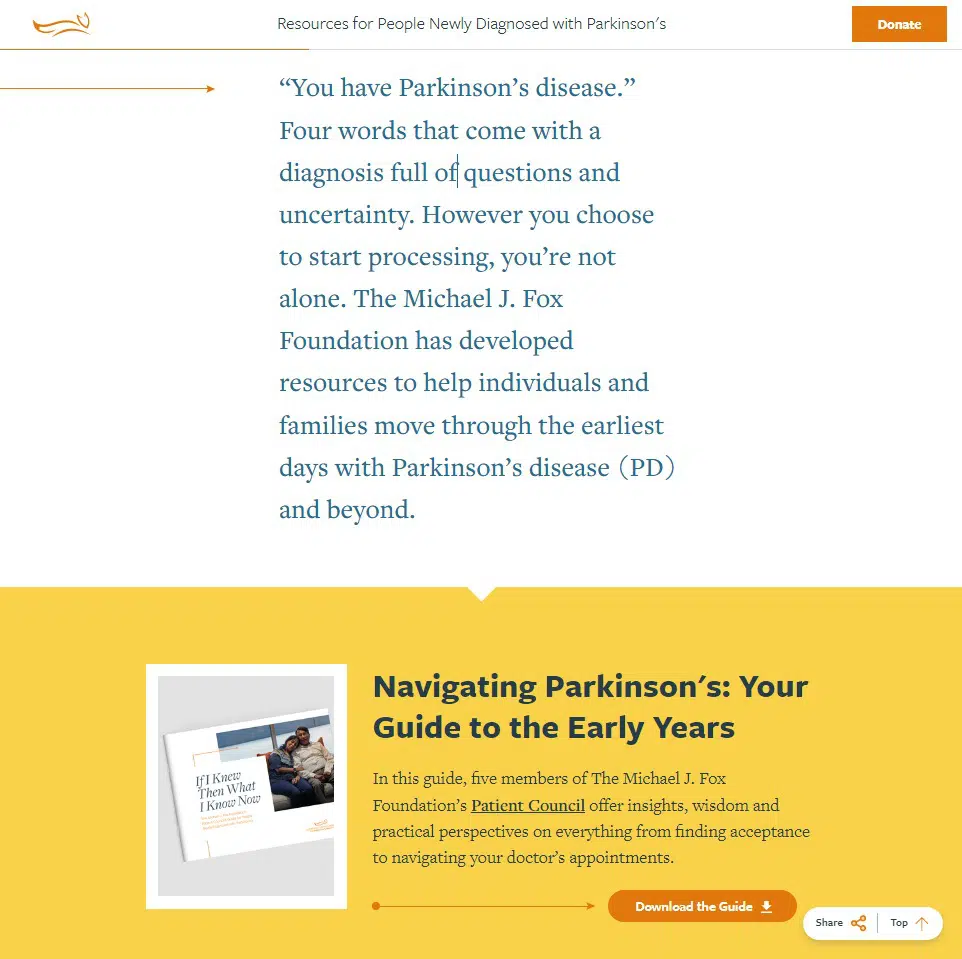Making the most of your Google Ad Grant requires a content strategy from start to finish. In addition to writing the actual ads, nonprofit organizations often overlook the most crucial part: where people land on your website and what you want them to do next. Creating the best landing page for Google Ads is an exercise in honing the message and the delivery to drive people toward a specific goal.
The Relationship Between Ads & Landing Pages
The process of setting up a campaign in Google Ads involves making a lot of decisions: selecting keywords, putting together ad headlines and descriptions, deciding on a landing page, and choosing relevant website conversions for visitors to complete.
With so much going on as ads come together, it’s easy to overlook how these pieces work together:
- Keyword phrases woven into your landing page content help demonstrate relevance.
- Compelling ad copy leverages your top keywords to motivate people to click, which builds ad strength.
- The ability to easily (and quickly) complete conversions on your website keeps visitors motivated and factors into Google’s quality scores.
Treating landing pages as an afterthought, like simply sending everyone to your homepage, does a disservice to your whole ad campaign. After all your work to target the right audience, you let them down with a generic message that doesn’t speak to what they were searching for in the first place.
Ultimately, that means that you’ll spend more of your budget on ads to compete with other advertisers who are on top of their ads game—or you won’t be able to compete with higher-quality ads at all.
Take a different route and learn how to most effectively create landing pages by focusing on a goal and creating content that supports a person’s journey to taking the desired action.
Do You Need a Fully New Page?
There are circumstances where a new set of ads necessitates creating a new landing page for your visitors. One-time events, specific volunteer opportunities, and special fundraising campaigns are likely to have unique messages and calls to action on a short-term timeline.
Other times, the best landing page for Google Ads could be a page that already exists on your website and just needs a few tweaks to incorporate keywords and a strong call to action. We’ve seen nonprofits get great results with landing pages that are:
- Search-optimized blog posts providing valuable information on a related topic
- Comprehensive program pages that connect people to services they need
- A resource summary in a digital library, prompting people to download information
Align the Landing Page to Your Visitor’s Goals
No matter the approach, build or adjust the landing page to strongly align with the promise you make in your ads. The primary goal of the ad campaign should be reflected in a key action on the page.
- If the top objective is fundraising, will people donate directly on the page?
- For awareness-building, are you asking them to subscribe to your newsletter?
- Promoting an event? You might include an online registration form.
- In the search for advocates, will you direct people to a pledge form or offer letter-writing instructions?
A landing page with more than one primary goal can quickly become overwhelming for someone who is visiting your site for the first time or doesn’t know your nonprofit very well. If you find yourself trying to cram too much into a single page, it’s a good sign that you need to create multiple landing pages for different purposes and audiences (just like you should do for the ads themselves).
Creating the Best Landing Page For Google Ads
In a related post on planning and managing nonprofit landing pages, we describe some key attributes of any type of landing page that you’re hoping to promote. These include brevity, urgency, accessibility and simplicity. The other essential element is a single, strong call to action (e.g. donate, volunteer, download) for a visitor to take based on the content of the page.
But what does that look like in practice for Google Ad landing pages?
Based on our experience, it’s helpful to follow a basic content formula that includes the following core components for each ad landing page. You don’t have to follow this order of content, but try to hit on each element.
Feature a unique value proposition
Keep in mind that someone who clicks on a Google search ad to visit your website isn’t likely to be a person who keeps your organization at the front of their mind. (Otherwise, they would have gone to your website directly.)
To engage this type of audience, your landing page should quickly present the benefit or value of what you’re talking about on the page. In the examples later in the post, you’ll see bold statements at the tops of pages:
- You can help us save lives. As a volunteer you are on the front lines; working one on one with LGBTQ young people to help them navigate tough times and to prevent suicide. – The Trevor Project
- Kids affected by cancer deserve better, safer treatments – and you can help them by fundraising for childhood cancer research! – Children’s Cancer Research Fund
- “You have Parkinson’s disease.” Four words that come with a diagnosis full of questions and uncertainty. However you choose to start processing, you’re not alone. – Michael J. Fox Foundation
Include a strong visual
Before worrying too much about design, focus on making a well-formatted web page that looks great on mobile devices. Both your visitors and Google will be happy with a page that loads quickly and is easy to scan.
That said, even just one compelling, high-quality photo or image can bring a landing page to life. It can add emotion, help your target audience identify with what you’re saying, reinforce the tone of the message, or simply put a face or place to the topic of your page.
Address your target audience
Creating an effective landing page is easier with a target audience persona to focus on. Who is your landing page intended for? Consider what their state of mind is when searching for the topic of your page. What common questions might they have? What about objections or concerns?
Your page doesn’t have to go into great detail, but covering the basics will reassure visitors that they are in the right place and you understand their needs and goals. In the example below from The Trevor Project, you’ll see that this volunteer-centric landing page includes an overview of volunteer qualifications and the application process as well as FAQs.
Bonus points for writing the content for your landing page using the language your visitors use. That’ll increase the likelihood that your page will resonate with your audience.
Build credibility and trust
A landing page doesn’t offer a ton of time and space to show that your nonprofit is trustworthy and that what you’re asking the visitor to do is secure, gives them personal value or is otherwise in their best interest.
There are many types of content and design choices that demonstrate credibility on nonprofit websites, and you can use them on your landing page, too. From adding in contact information and using realistic images, to featuring testimonials, partner logos or inspiring statistics, try to include at least one element on the page that reinforces your nonprofit’s ability to deliver on your unique value proposition.
Promote the logical next step
Even if your ads are only intended to build awareness of your cause and mission, there should always be one action that you want visitors to take once landing on your site. You’ve accomplished the difficult part of getting someone new to hear what you have to say. Now you have an opportunity to push them to take another step by anticipating what someone will likely be most interested in after clicking your ad and reading the page.
Based on our experience, the best landing page for Google Ads will make it easy to complete the desired action (or conversion) directly on the page. That could mean embedding an online form, collecting contact information, clicking a button to download a document, or sharing a specific message with personal social media accounts.
If you send people away from the landing page to complete the step, you risk losing them and their interest.
Examples of Nonprofit Google Ad Landing Pages
Let’s take a look at three examples of Google Ad landing pages from real nonprofits. See how they incorporate the core elements described above to make an engaging experience for ad traffic that enters their sites on these pages.
1. The Trevor Project – Hope Starts with a Volunteer
Folks who are looking to volunteer are well-served by this ad and landing page for The Trevor Project. The page makes the case for the power of volunteers and the benefits, along with practical information about taking the next step and a clear path to applying.
Example Google Ad

Corresponding Landing Page

2. Children’s Cancer Research Fund – Be a Fundraiser for Childhood Cancer
This page demonstrates the effectiveness of creating a landing page for people with a specific need or interest. Imagine wanting to fundraise on behalf of a charity and landing on a generic Donate page instead of a place like this that speaks to the goal of the target audience. The use of stories and real examples reinforces the credibility of the organization and its impact.
Example Google Ad

Corresponding Landing Page

3. The Michael J. Fox Foundation – Resources for People Newly Diagnosed with Parkinson’s
Are you using sitelink extensions in your Google Ad campaigns? If so, you have landing pages to think about that might not even be the main URL for your ad. Case in point, this Resources page is a link that’s offered as part of the Awareness Month ad from the Michael J. Fox Foundation. Page visitors are met with welcoming content that shows an understanding of their immediate needs, and they can access resources with a simple click of a button.
Example Google Ad

Corresponding Landing Page

Managing a Google Ad Grant can feel unwieldy, even when you’re seeing some success getting impressions and clicks. The hustle and bustle of writing ads, choosing keywords and making sure you’re following program policies is a lot to have on your plate.
To make the most of your time investment and the website traffic you’re building from ads, get strategic about the content and calls to action on landing pages. You’ll see ad traffic completing more conversions on your site, and you’ll start to capture more mindshare of the target audience you’re trying to reach.
What’s the best landing page for Google Ads that your nonprofit is using right now? Anything you’ve tried on a landing page that didn’t work? See you in the comments below. Feel free to show off a little bit!

Comments